Don’t know how to read a tire? This series of numbers and letters located on the side of the tire can seem incomprehensible when you don’t know their meaning. In addition, a tire that does not meet safety standards can result in a hefty fine and put you and other motorists at risk. In this how to read a tire article of Gazettely, we will reveal some tips and tricks to help you buy your tires more professionally.
How to read a tire and its characteristics
Tires are defined by several criteria that are presented in the form of numbers and letters. This may sound a bit abstract, but it is straightforward! To clarify this point, let’s take an example with the 225/45 R17 91W.
Reading the tire sidewall:
- 225 = width
- 45 = height
- R = radial structure
- 17 = diameter
- 91 = load index
- W = speed rating
As shown in the example above, you can now easily read a tire sidewall and explain it to others.
What the tire’s characteristics mean?
OK, so let’s dig a little deeper. To start with, tire width is expressed in millimeters. Height is described as a percentage and is the ratio of the sidewall height to the section width.
Diameter is the height of the rim and is expressed in inches (1 inch = 2.54 cm). So our tire is 43.18 cm in diameter.
In this example, “91” corresponds to the load index. Be careful; this number is not equivalent to the kilos that the tire can support; it is only an indicator. This number equals a defined number of kilograms. With a load index of 91, a tire can support up to 615 kg. (See the load index table)
And what does the R stand for? R stands for “radial”. This is the structure most often used in tires. Before it was invented, tire manufacturers used the diagonal structure (noted D), which is less efficient for various reasons (faster wear, less economical, lack of grip). If a tire is “belted”, the inscription is a “B”.
Finally, a letter indicates the maximum speed that the tire can support. In this case, the “W” refers to a speed index. To know it, it is necessary to look at the equivalences. (See our speed index table). The tires we have chosen to analyze can go up to 270 km/h.
For some “high performance” models, it is possible to read “ZR” or “ZR(Y)”, meaning that it can exceed 240 km/h and 300 km/h.
Of course, in addition to this, you can find the manufacturer’s name and the model’s name. Sizes we have chosen to illustrate the article correspond to the Continental Sportcontact 3 model or the Dunlop SP Sport 01 A.
So no other references on a tire?
Sadly yes, or it would be too simple. The markings we have described above are common to all tires. However, these are not the only ones; other references are mandatory. Below is a list of those you can find:
Date and place of manufacture
When and where was the tire manufactured? You can find the answer in 5 indicators. An example: DOT DMOF PA1R 2311
DOT = Department of Transportation
DMOF = Manufacturing plant code
PA = Dimensional code
1R = Manufacturing code
2311 = Week and year of manufacture
The date is mandatory on every tire and consists of 4 digits. If your tire has “1516” on it, that means it was made in the 15th week of 2016. In other words, it was manufactured in the month of April 2016. To note, the more recent the tire, the higher the performance.
A tire is also marked “Made in”, which tells the driver where the product was manufactured.
Certification
This is a criterion that must be taken into account for manufacturers; it is they who choose what type of tire should be mounted on the vehicle. Some manufacturers give their opinion on the tires, but drivers are not obliged to choose them. It’s possible to take a tire approved by Audi (AO) for a Mercedes (MO) or vice versa.
Every manufacturer has a marker to indicate which vehicle brand their tire is approved for. For instance, “VO” indicates that the rubber is suitable for a Volkswagen vehicle, and “GZ” will correspond to Subaru.
Winter marking
“M+S” indicates that the tire is suitable for driving on mud (M=Mud) and snow (S=Snow). It can also be written in M&S or MS.
The 3PMSF (3 Peaks Mountain Snow Flake) pictogram proves that the tire has passed the winter conditions tests (snow, ice, negative temperatures).
The other mentions
- Reinforced tires: Reinforced, Extra Load or XL
- Tubeless tires: Tubeless
- Run-flat tires: the brands and acronyms are different depending on the brand (see table 3).
Tire criteria by country
United States
- UTQG code: it is a standard required by the country. It shows that the tires respect the American safety standards in this field. It can be found in many manufacturers who export across the Atlantic.
- Safety Warning: this is a safety message to alert drivers to the safety precautions to be taken when using the tire.
Europe
- The “E” marking: this homologation set up by the ECE indicates that the tire complies with the CEE-R30 standard. This is followed by a number corresponding to the country in which the tire has been approved (Grid of country codes). For instance, E9 corresponds to Spain. Next, come several numbers that refer to the validation number of the tire by the country concerned. Finally, the “Made in” gives the country of manufacture.
EU labeling
Did you think that reading a tire ends here? Well no! When you finally find the right size tire, the proper marking and the right model, you’ll come across this label at the time of purchase:
As of November 1, 2012, numerous products must have standardized labeling for Europe. Concerning tires, there are three essential elements noted:
- Consumption: This rating represents the tire’s rolling resistance. The more a tire resists rolling, the more it consumes fuel. This criterion is rated from A to G.
- Grip: in case of rain and, by definition, wet roads, the tire must grip the road sufficiently to avoid skidding and aquaplaning. This criterion is rated from A to G.
- Noise: The tire rolling on the asphalt is more or less noisy. This rating is indicated in decibels (dB).
Tables to better read a tire
In the following, you can find all the tables that will help you in reading a tire sidewall easily.
Also Read:
- 18 Most Iconic Cars in the History of TV and Film
- All You Should Know About Android Auto
- 17 Best Convertible Cars of 2021
Table 1: Load indices in kg per tire
Important! You will find the load index on the sidewall of your tires or in your vehicle’s logbook. This number is generally indicated after the size and before the speed index, e.g. “225/45 R17 91W”. The load of the pneumatic load must correspond at least to half of the total load of the axle of your vehicle.
Table 2: speed ratings in Km/h
Please note! You can find the speed index on the side of your tires or in your vehicle’s logbook. It’s a letter generally indicated after the load in the dimension, ex: ” 225/45 R17 91W”. It is prohibited to mount tires with a lower speed rating than your original tires, but you can mount tires with a higher rating. If you aren’t sure of the rating, check your vehicle’s owner’s manual or call a dealer for confirmation.
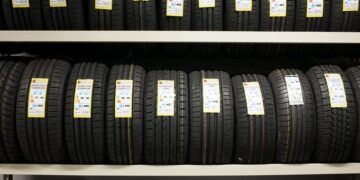








































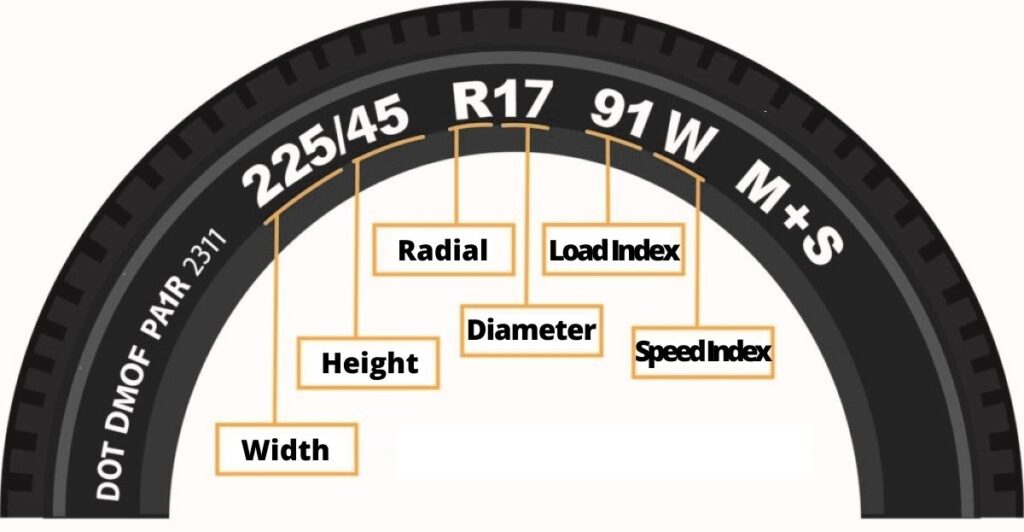
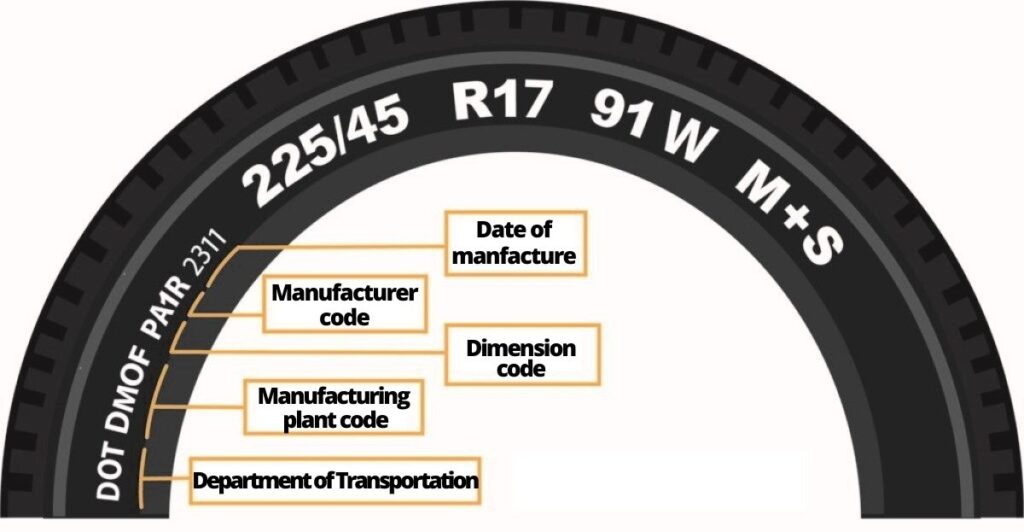

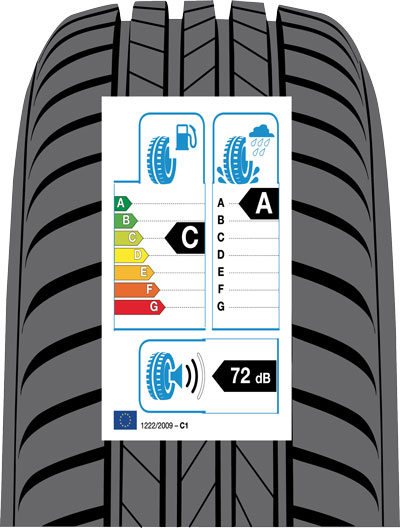
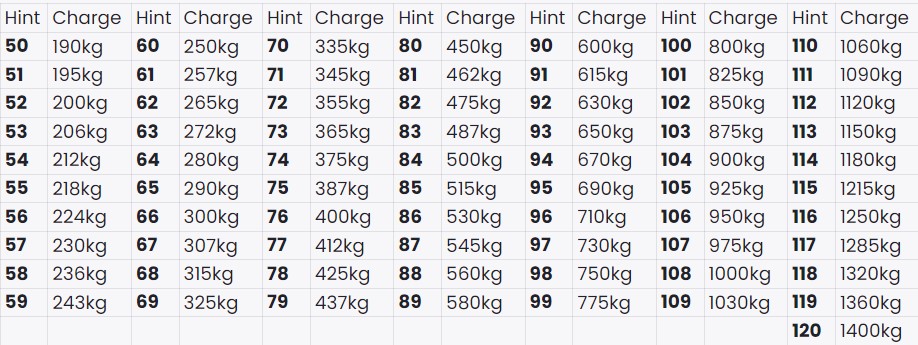

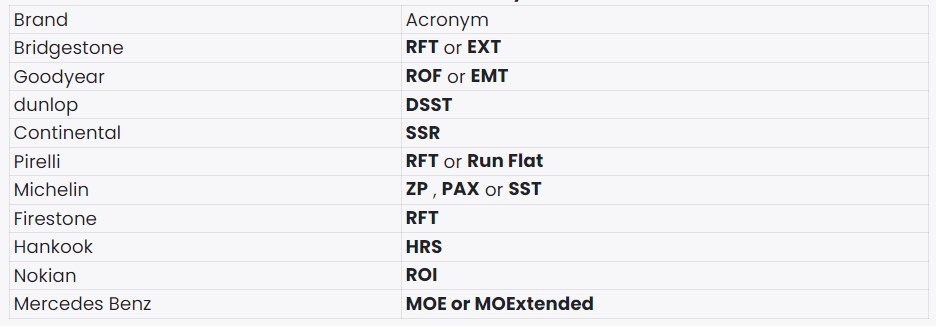
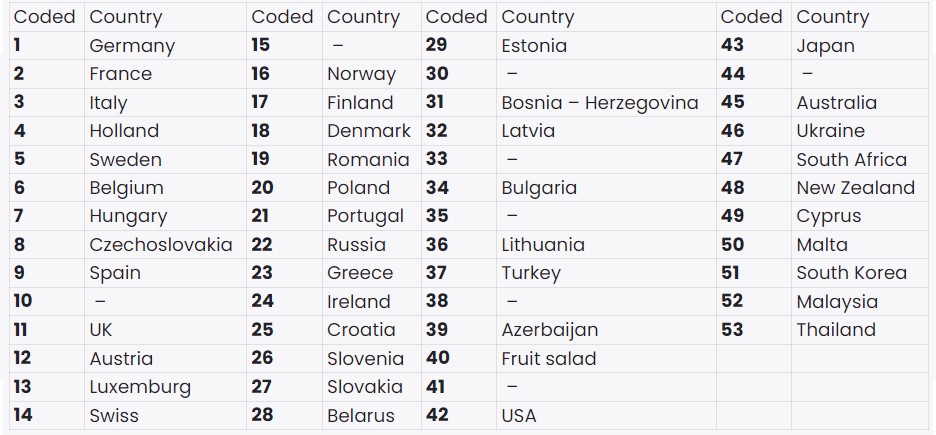








Discussion about this post